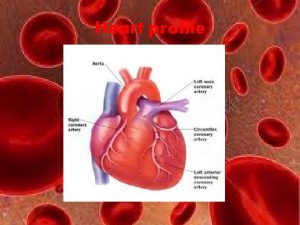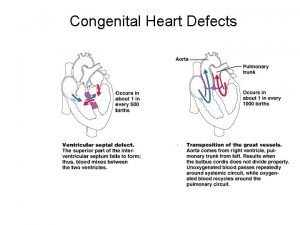Operations Management OPERATIONS MANAGEMENT IS AT THE HEART











- Slides: 11

Operations Management OPERATIONS MANAGEMENT IS AT THE HEART OF EVERY PRODUCT OR SERVICE YOU USE—FROM THE ORANGE JUICE YOU DRINK IN THE MORNING TO THE CAR YOU DRIVE TO WORK TO THE TV YOU WATCH AFTER A LONG DAY AT THE OFFICE. IT’S CONCERNED WITH MANAGING BUSINESS PROCESSES THAT IMPROVE THE PRODUCTS AND SERVICES CONSUMERS USE EVERY DAY—AND WITH BRINGING NEW ONES TO LIFE. HTTPS: //VBCOURSE. KNOWLEDGEMATTERS. COM/ASSIGNMENT/STARTREADING/132048

What is operations management? Operations management gives business leaders the tools and the vision to design and redesign business processes to achieve organizational goals, both in the short term and in the long term. It touches upon areas such as capacity management, supply chain management, and quality management. Operations managers are focused on helping companies meet their goals. Think of them as orchestra conductors of a sort—they help make sure all of the various departments within a company play together, and in tune, to achieve the company’s objectives. What are those objectives? Developing products and services that customers want to buy. To do that, and in addition to their strategic role, operations managers are intimately involved with the hiring of employees and the purchasing of materials. “Operations really is the heart of most companies, because the operations department actually gets the job that the company needs to get done, ” says Eric Schaudt, manager of operations programs, material planning, and analysis at Northrop Grumman. HTTPS: //VBCOURSE. KNOWLEDGEMATTERS. COM/ASSIGNMENT/STARTREADING/132048

The objectives of operations management Operations management is as concerned about how a business is run as it is about the end goals of the business. This is because how a business operates will answer—whether the company knows it or not—vital questions, such as how quickly new products will get to market, the cost structure of a company’s products and services, and even the quality of its products. To that end, operations management seeks to achieve several objectives in the day-to-day operations of the company: Quality: What is the company doing to ensure that the products it makes are of the highest quality? What quality control measures are in place? Can they be improved? How is quality measured and improved? Speed: What is the time to market for the company’s products and services? How does this compare with past product launches? What can be done to make manufacturing processes more efficient? HTTPS: //VBCOURSE. KNOWLEDGEMATTERS. COM/ASSIGNMENT/STARTREADING/132048

The objectives of operations management Dependability: How can manufacturing processes be safer and more reliable? What needs to be done to make sure equipment functions properly? Is there extra manufacturing capacity available in the event of equipment failure? Flexibility: Can the company’s manufacturing processes be set up in a such a way that it’s easy to enhance existing products and quickly produce new ones? Moreover, can the company’s human operations and management be flexible enough to respond to market trends and not become stuck in the past? Cost: Virtually every company has waste, be it within manufacturing processes or in the way human resources are deployed and managed. What can be done to leverage the company’s human and nonhuman resources to cut waste and thus reduce costs, leading to higher profit margins? HTTPS: //VBCOURSE. KNOWLEDGEMATTERS. COM/ASSIGNMENT/STARTREADING/132048

The operations manager as a designer Even though the operations manager usually stays clear of Photoshop or In. Design, he or she is still very much a designer within an organization. The operations manager is intimately involved with several types of design: process design, supply network design, job design, and organization design. Process design: Process design, as the name implies, is the art and science of designing processes within an organization. However, it would be better to call it process redesign, because every organization has processes—it’s just that those processes are often undocumented and are usually less than ideal. HTTPS: //VBCOURSE. KNOWLEDGEMATTERS. COM/ASSIGNMENT/STARTREADING/132048

The operations manager as a designer The first job of the operations manager is to understand how current organizational processes work. This presents an immediate challenge because the operations manager can’t simply ask employees or managers to tell them. As Hank Marquis, EVP of knowledge management at Universal Solutions Group and founder and director of NABSM. ORG, puts it: The very first thing you have to do is accept that no one really knows what is going on and how people perform their work, neither workers nor managers. It might seem obvious that the higher your management role, the less you truly understand how work actually gets done. However, not only do managers often have no idea of how processes get performed, most workers could not tell you if you asked them, either. HTTPS: //VBCOURSE. KNOWLEDGEMATTERS. COM/ASSIGNMENT/STARTREADING/132048

The operations manager as a designer To be able to improve processes, the operations manager must sit with teams and document processes. Then they must pay close attention to the details of the workflow and, according to Marquis, capture the following information: 1. Who is doing the work (including recording each time the person doing the work changes) 2. What is done at each step in the process 3. When the process begins, the time it takes to perform each major task, and any delays 4. Where the work is located at the start of the process and where the work goes Once you have all the facts, you must build a process flow chart to model the workflow. The process flowchart is a graphical representation of the process. The operations manager will complete the chart and review it with the relevant managers. HTTPS: //VBCOURSE. KNOWLEDGEMATTERS. COM/ASSIGNMENT/STARTREADING/132048

HTTPS: //VBCOURSE. KNOWLEDGEMATTERS. COM/ASSIGNMENT/STARTREADING/132048

Key Terms Capacity planning: The effort to ensure that, based on product demand, there is enough production capacity to satisfy the demand. Enterprise resource planning: A process concerned with the flow of information within an organization—with information defined broadly—and the processes for documenting, modeling, and improving those processes. Forecasting: An attempt to predict what the contours of the business and the larger industry in which the business is situated will look like several months or several years in the future. Job design: A process designed to increase the job satisfaction of employees. This is accomplished through techniques such as job rotation (e. g. , where assembly line workers assemble different pieces of a product). HTTPS: //VBCOURSE. KNOWLEDGEMATTERS. COM/ASSIGNMENT/STARTREADING/132048

Key Terms Materials requirements planning: The process of planning production by ensuring that raw materials get to the factory floor on time and finished products get to customers in a timely manner. Operations management: The science of managing business processes that improve the products and services consumers use every day—and that help bring new ones to life. Operations risk management: The science and art of anticipating possible risks to company forecasts and putting plans in place to adapt to possible changes in the customer demand patterns. Organization design: The process of taking a broader, more macro view of the organization, seeking out ways for it to function more effectively. Process design: The art and science of designing processes within an organization. HTTPS: //VBCOURSE. KNOWLEDGEMATTERS. COM/ASSIGNMENT/STARTREADING/132048

Key Terms Process flow chart: A graphical representation of a process. Project planning: A term used to describe the methods and practices required to achieve the stated goals for a given company initiative. Supply chain: The people, parts, and processes involved in getting products or services from suppliers, on through to manufacturing and production, and then on to customers. Work measurement: The science (and sometimes art) of determining how much time an employee needs in order to complete a given task. HTTPS: //VBCOURSE. KNOWLEDGEMATTERS. COM/ASSIGNMENT/STARTREADING/132048





















